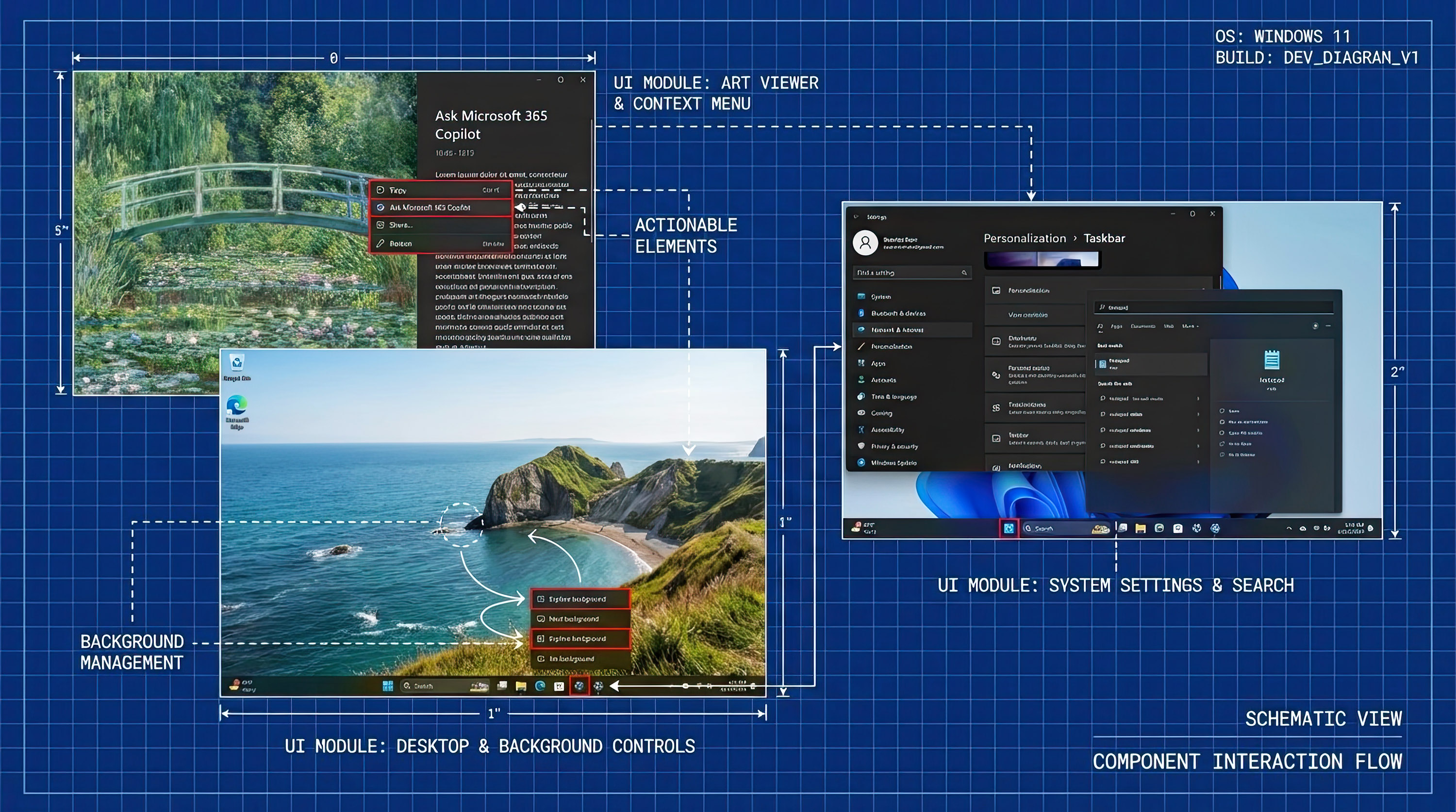Mirror's Edge Catalyst review: A successful reimagining of a dystopia
It's been eight years since Faith Connors last set foot on the rooftops of the first Mirror's Edge, and while the title didn't see record sales, it undeniably left a mark on the gaming industry.
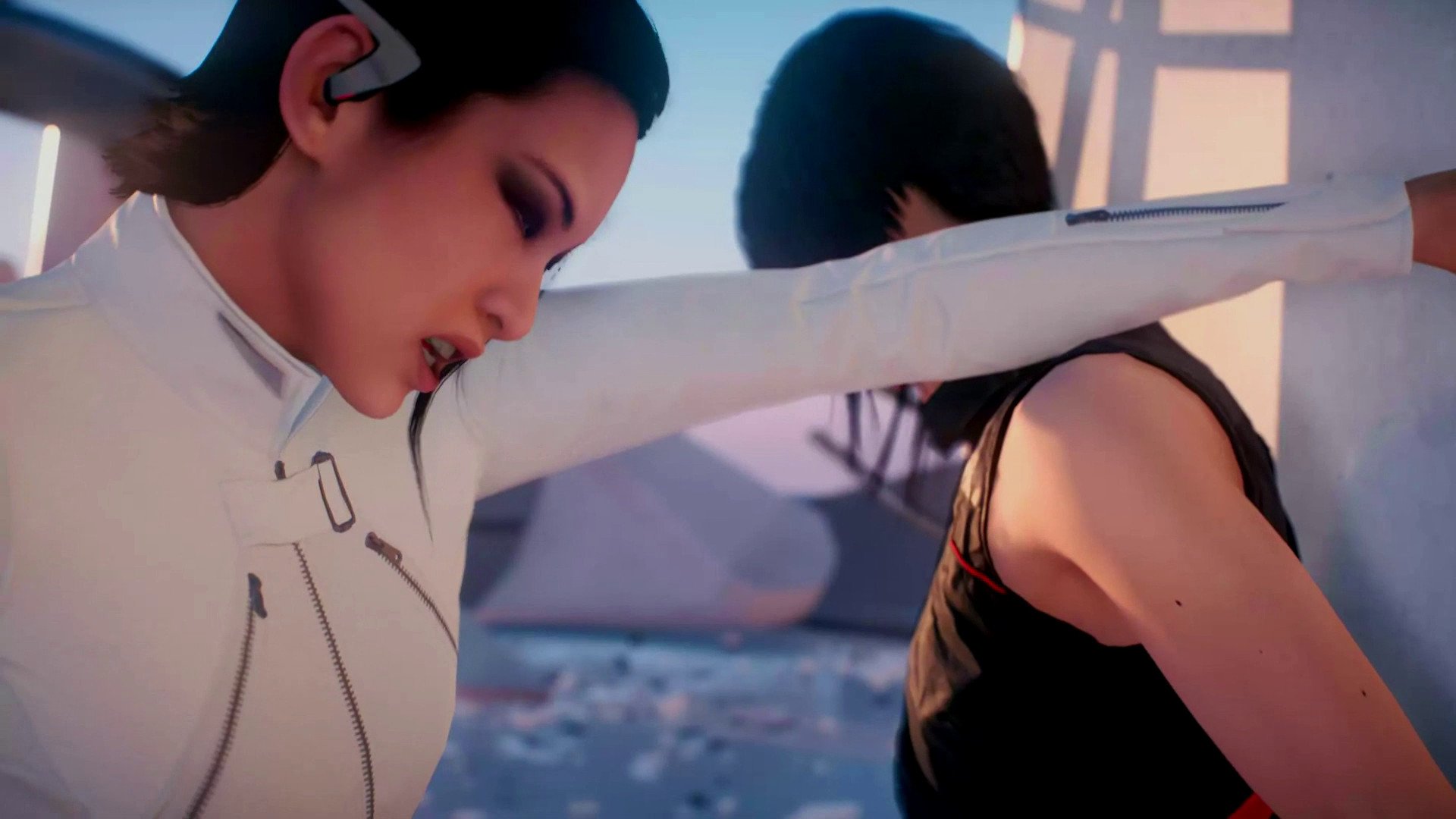
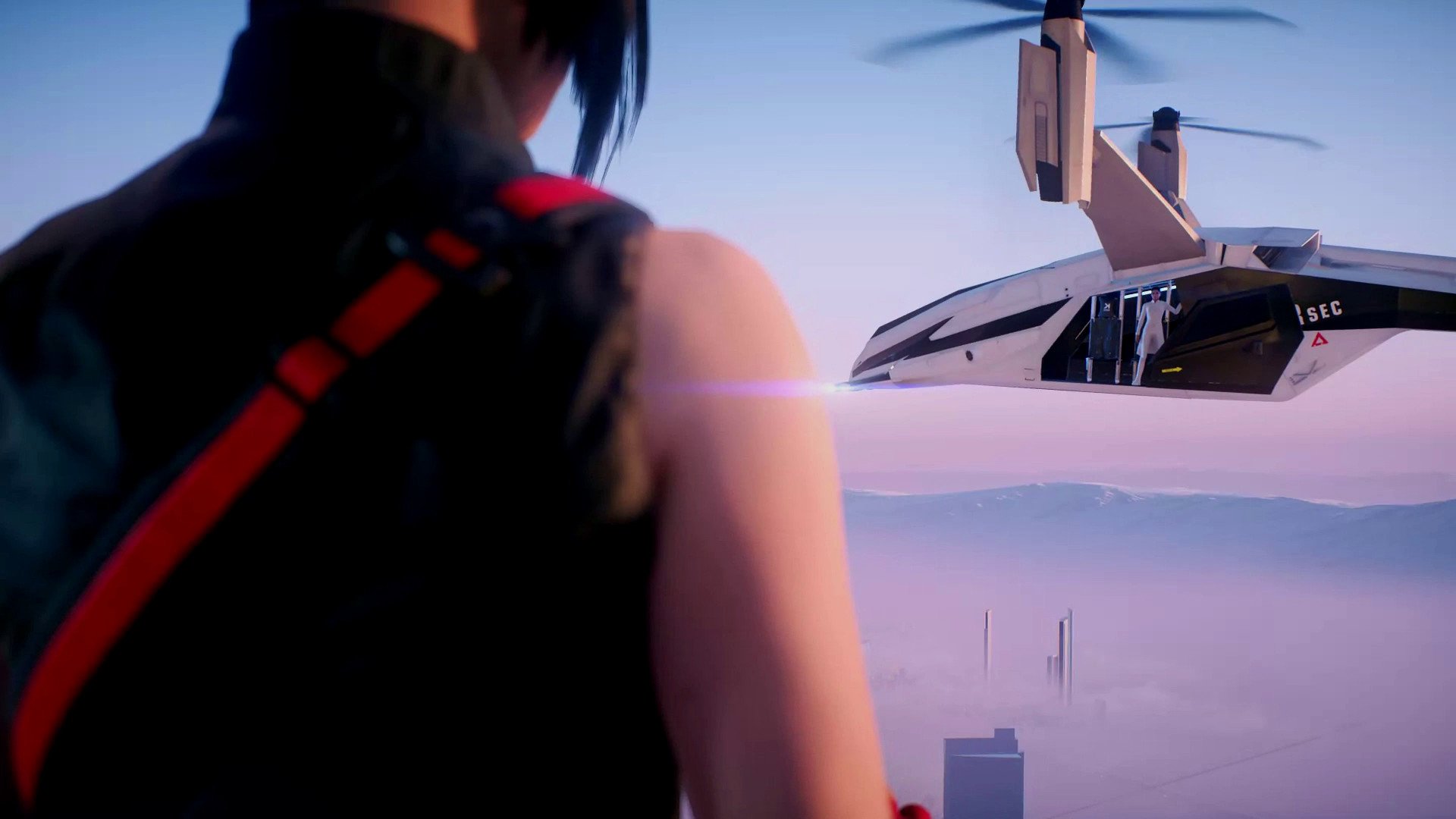
Many of today's top titles have a desire for flowing movement, which can be traced back to the intriguing concept behind DICE's parkour franchise. One of the first game's biggest flaws was its lack of depth, and beyond its finely tuned gameplay mechanics and distinct art style, it had little to offer in terms of outstanding content. In some ways, this simplicity is what made the game feel so unique, but ultimately it failed to succeed among other titles of the era.
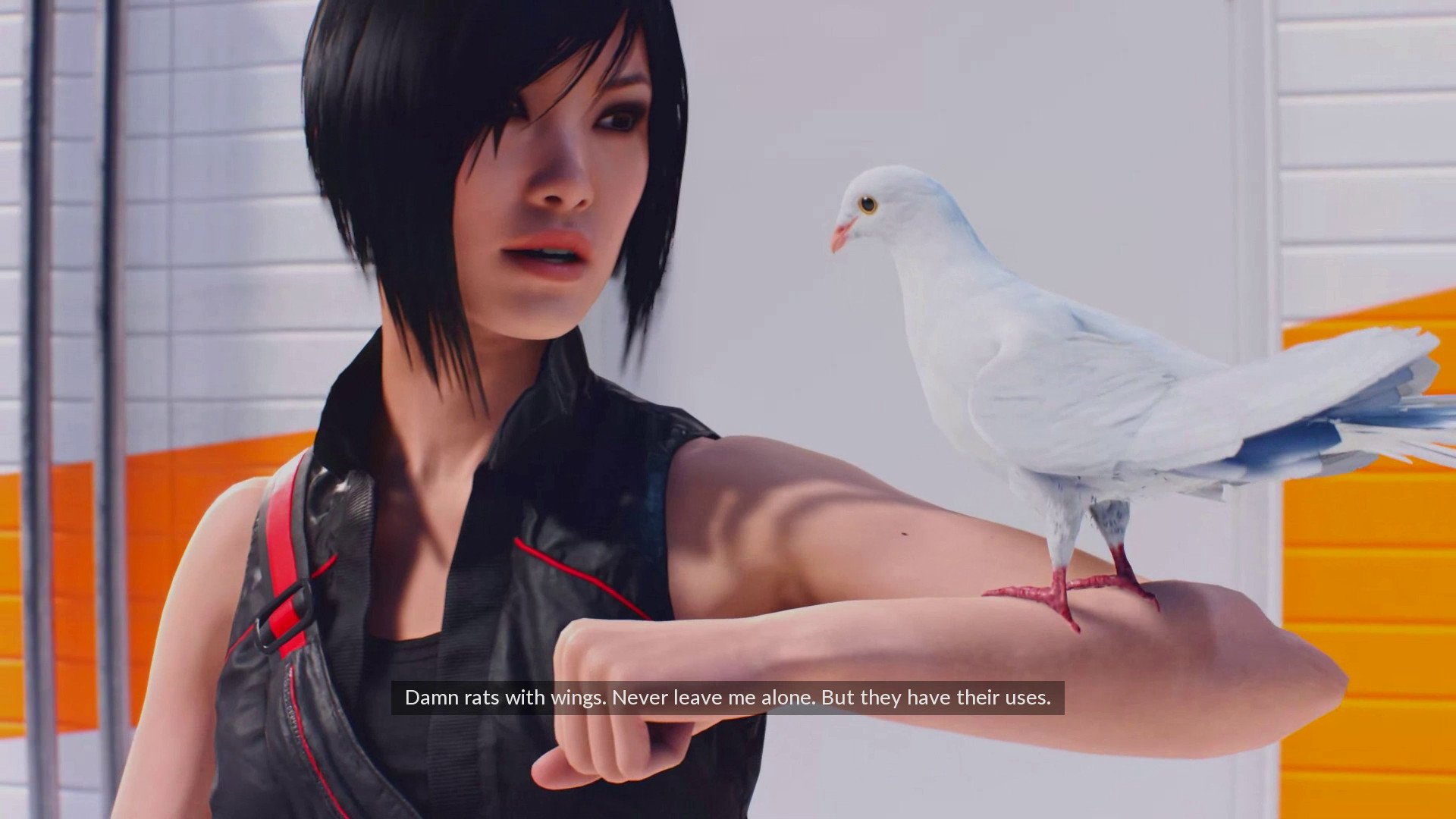
Eight years and one console generation later, Electronic Arts has revisited the world of Mirror's Edge in an attempt to discard the biggest flaws of the franchise. Despite the long wait for a successor, the gameplay of the first Mirror's Edge still has potential to flourish in the modern industry. With a current trend of fast-paced shooters that rely on similar movement mechanics, the adrenaline-inducing runs of Mirror's Edge are more appealing than ever.
This time around, DICE has introduced an open-world as a part of its approach, switching out the once-linear but tailored locale. Inheriting a similar décor and atmosphere, the game feels like a true reimagining of what the original title set out to achieve.
The game reintroduces its iconic protagonist, Faith Connors, who acts as a 'runner' in the city Glass. From the outside, the city is an urban, digitized utopia, but inside the walls operates a controlling group of corporations known as the Conglomerate. As a runner, Faith acts as a messenger for citizens, offering a secure delivery method obscured from the prying eyes of the controlling Corporate Houses. In a city where privacy is close to non-existent, the runners are a neutral faction within the city.
The fight for freedom
Story
Mirror's Edge Catalyst has diverged from the first game's approach, which placed a heavier focus on the city and its values, rather than the dictating government that inhabited it. While the societal values are near-identical, a lesser focus is placed on the world as a whole. The original relied on the urban atmosphere to create an engaging experience, which has been replaced with a further look into internal conflicts. The game puts Faith's relationships at the forefront of the narrative, which are used to convey the brutal agenda of the government agencies.
"The game focuses on smaller conflicts between characters"
From the outset, DICE pitches Mirror's Edge Catalyst as a telling of Faith's origin story, and how this shaped her values as a runner. This plays a massive role in how the narrative is conveyed, by delivering the game's plot through emotion-driven relationships.
All the latest news, reviews, and guides for Windows and Xbox diehards.
The game's cast is varied, each with their own unique traits which contribute to the overarching plotline. Throughout the story each of the key cast members is explored in their own way, giving background and meaning to their placement in the city. In the game's later chapters this becomes a more prevalent attribute, adding reasoning for each character's motives.
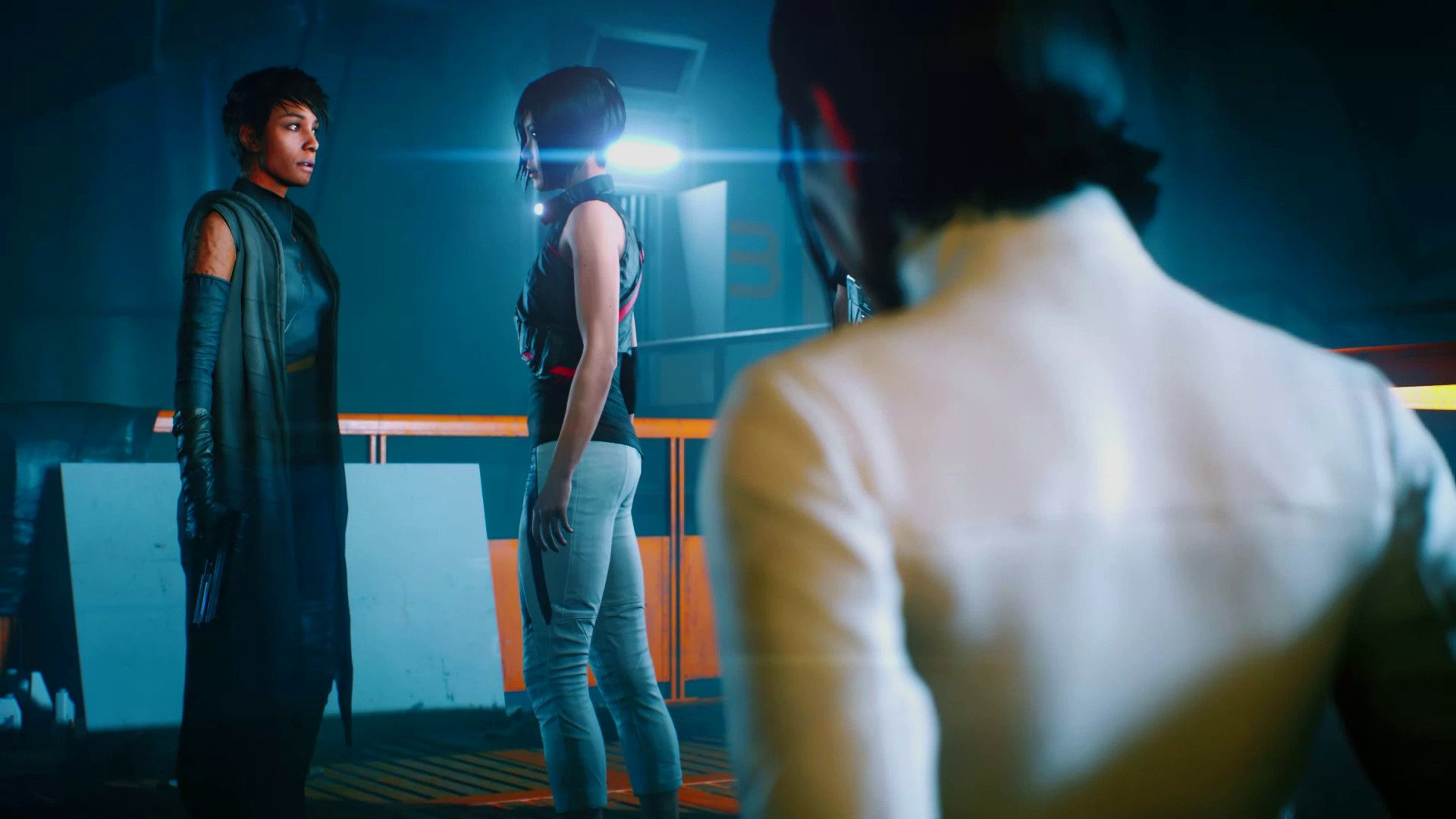
As a result of these changes, the game focuses on smaller conflicts between characters and their differing approaches to regaining freedom. The emotion portrayed by the core cast contributes massively towards this, immersing the player in Faith's position as a part of the resistance. These relationships are used to progress the narrative throughout the course of the main storyline.
While a number of interesting narrative components are explored over the course of Catalyst's tale, they sadly amount to a jarring cliffhanger. As a result of a somewhat abrupt ending, the game's conclusion lays a perfect path for a sequel. While I look forward to continuing my adventure in Glass, the game's unsatisfying conclusion fails to round off the most intriguing aspects of the story.
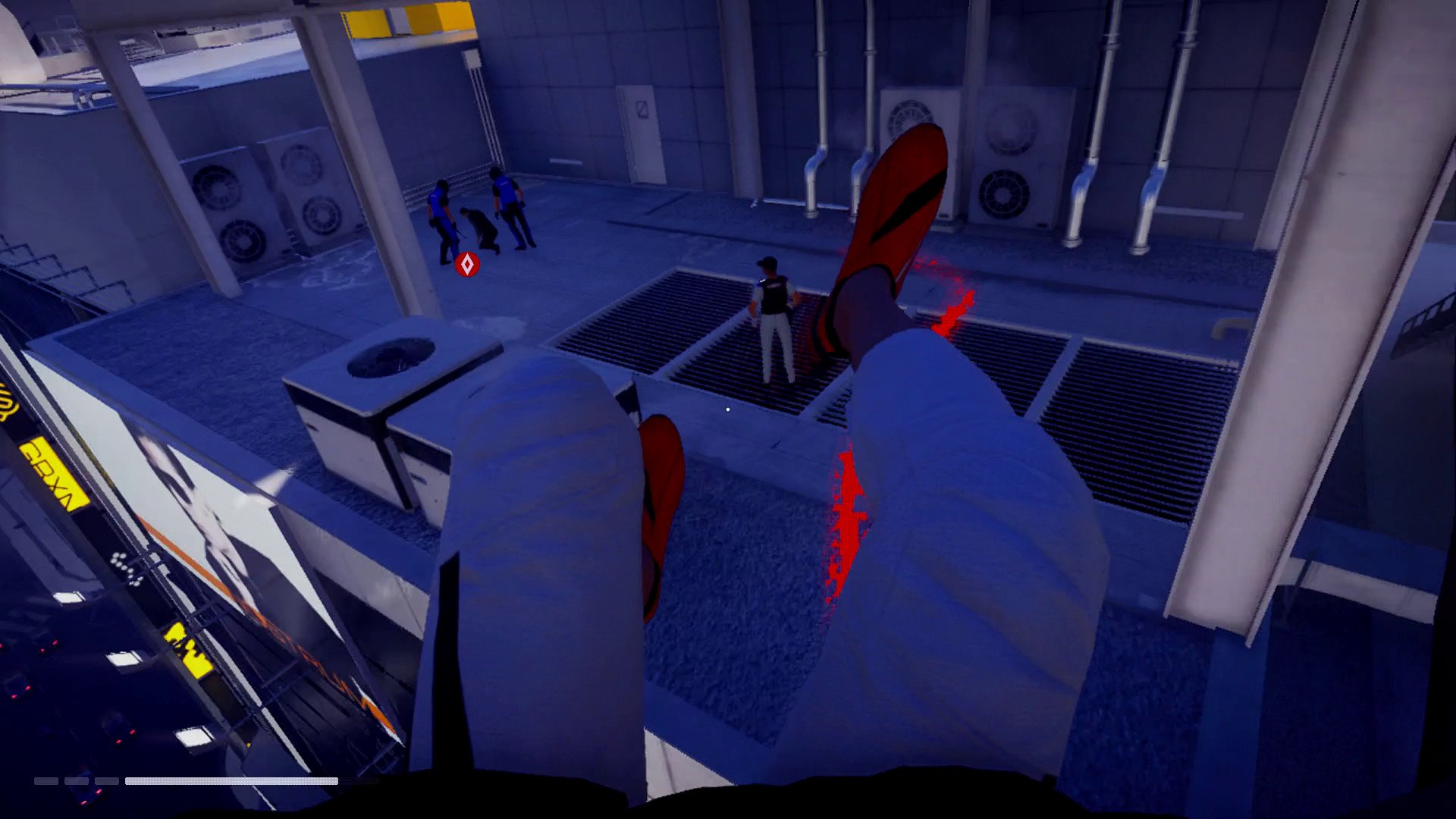
Follow the red
Movement
"Crisp and sharp movement complements its cinematic animations"
Mirror's Edge Catalyst's greatest strengths are in its fluid, tight controls and how these naturally correspond to in-game movements. Any form of Faith's motion never fails to feel robust, and this consistency is what makes the game feel so compelling.
The game's crisp and sharp movement complements its cinematic animations, culminating into a responsive, flowing experience. Through these successfully interwoven actions, Faith has been given a true sense of momentum which rewards players who maintain this through precise timing and button combinations.
The world of Mirror's Edge Catalyst is Faith's virtual playground, offering tailor-made scenarios to take advantage of her abilities. A varied range of geometric shapes have been specifically designed to provide the best running experiences, composed as an obstacle course tailored for high-speed parkour. While this special accommodation makes for consistent and engaging gameplay, some aspects of Catalyst's open world begin to feel dull and manufactured over time.
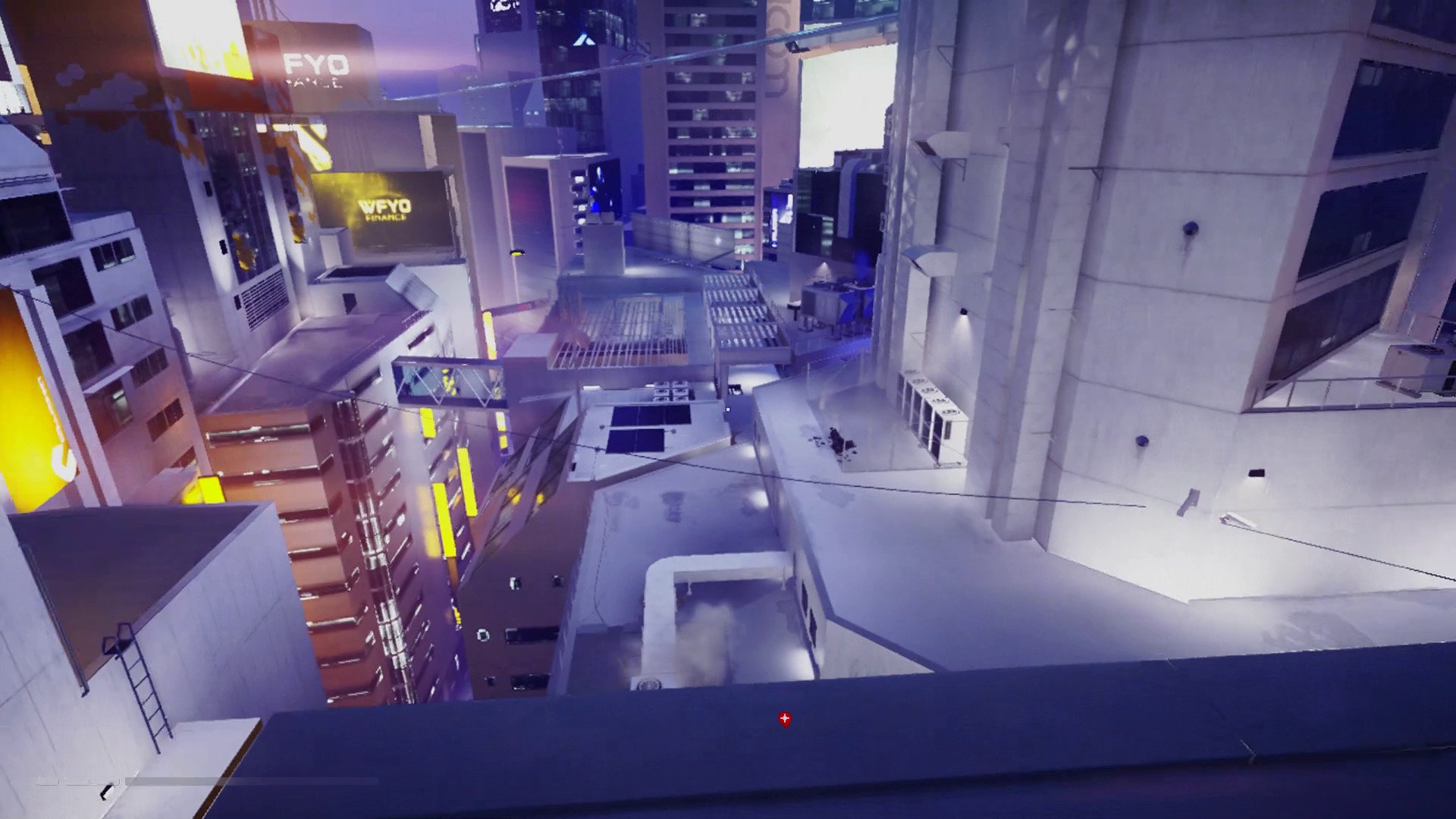
A runner's paradise
World
On the surface, an outstanding trait of Mirror's Edge is its distinct art style, favoring whites and blacks with a hint of color. This minimal palette hugely complements the game's lore, hinting at an impure undertone of a manicured utopia. The game's art direction is similar to the first game, continuing to portray the clinical, sterile environment littered with minor imperfections. These smaller faults are more widespread across Mirror's Edge Catalyst, creating a more immersive cityscape that feels truly inhabited.
Due to this grittier approach, the effectiveness of a once-exceptional art style has been reduced. Less vibrant colours are prevalent throughout the city and don't contrast as heavily with the surrounding architecture. The move to an open world is responsible for this, with some less crucial areas lacking a huge amount of creative input. In the first game, which was strictly linear, each scenario was refined and tailored to the ongoing events, but now lacks a natural element to make it unique. At points, the open world also shows aspects of its linear design, with clear lanes concealed by an expansive play space.
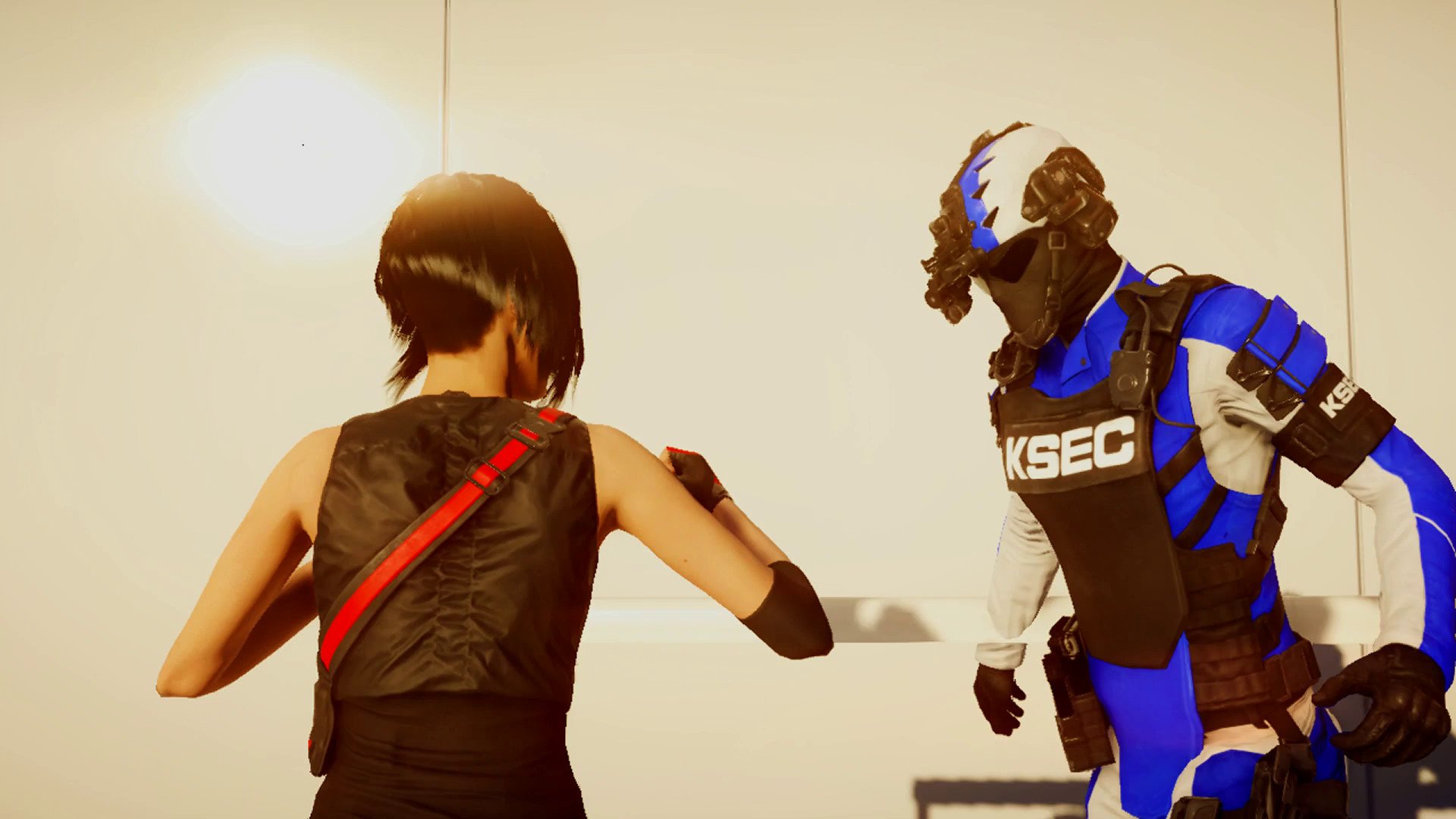
A flick and a kick
Combat
"This time around, the game's combat is still the weakest part of the package"
The biggest flaws in Mirror's Edge Catalyst come from its combat mechanics and their implementation into the game. With guns no longer usable, Faith is required to use her momentum as a weapon. Despite DICE's efforts to improve the most inferior aspect of the previous game, a number of inconsistencies make combat feel sluggish and clunky. The game's combat is still the weakest part of the package.
The basic combat is outlined in the game's tutorial, with two buttons mapped to light and heavy attacks. Light attacks aren't as damaging, but allow Faith to withhold her momentum and bypass enemies. In theory, these combat mechanics should provide a solution for players to maintain their speed, but various overlooked design decisions hold back their potential.
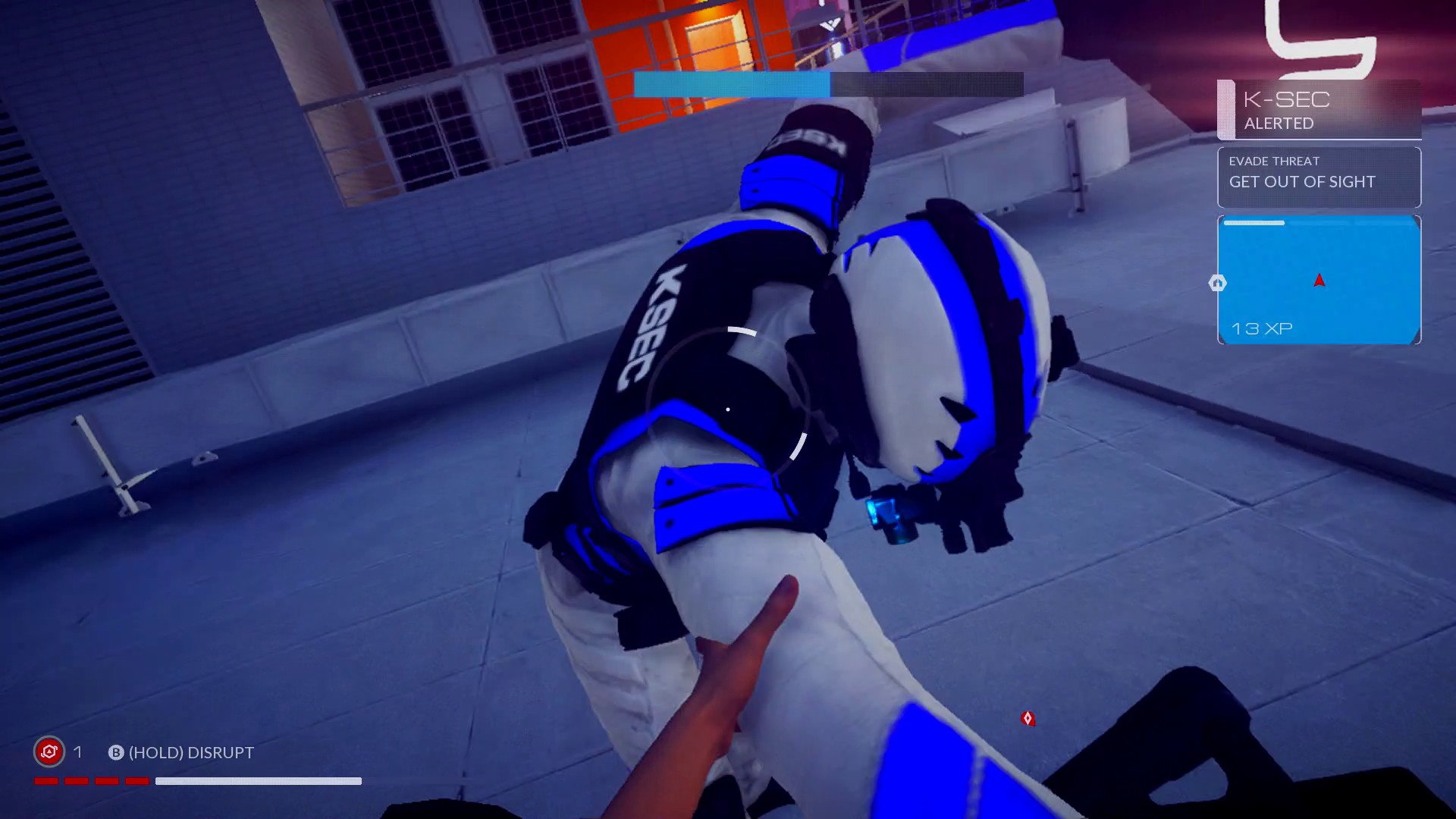
Maybe the best mechanic which advocates player locomotion is the 'Focus Shield', an invisible shield that builds up as the player gains velocity. This allows players to deflect bullets while continuing to run at high speeds but rapidly depletes when momentum is lost. This is frequently used in later levels, giving an extra layer of protection aside from your relatively low health.
Players are also rewarded for using their speed as an offensive measure, with increased damage when traveling at higher speeds. By flinging Faith from the geometry at various heights, her body can be used as a lethal projectile which deals heavy damage.
Unfortunately, the maps haven't been designed to accommodate this play style, often introducing forced combat scenarios in large expansive areas. These arena-like scenarios are rarely populated with sufficient assets to take advantage of Faith's abilities and end up being a cause for reducing the flow of gameplay.
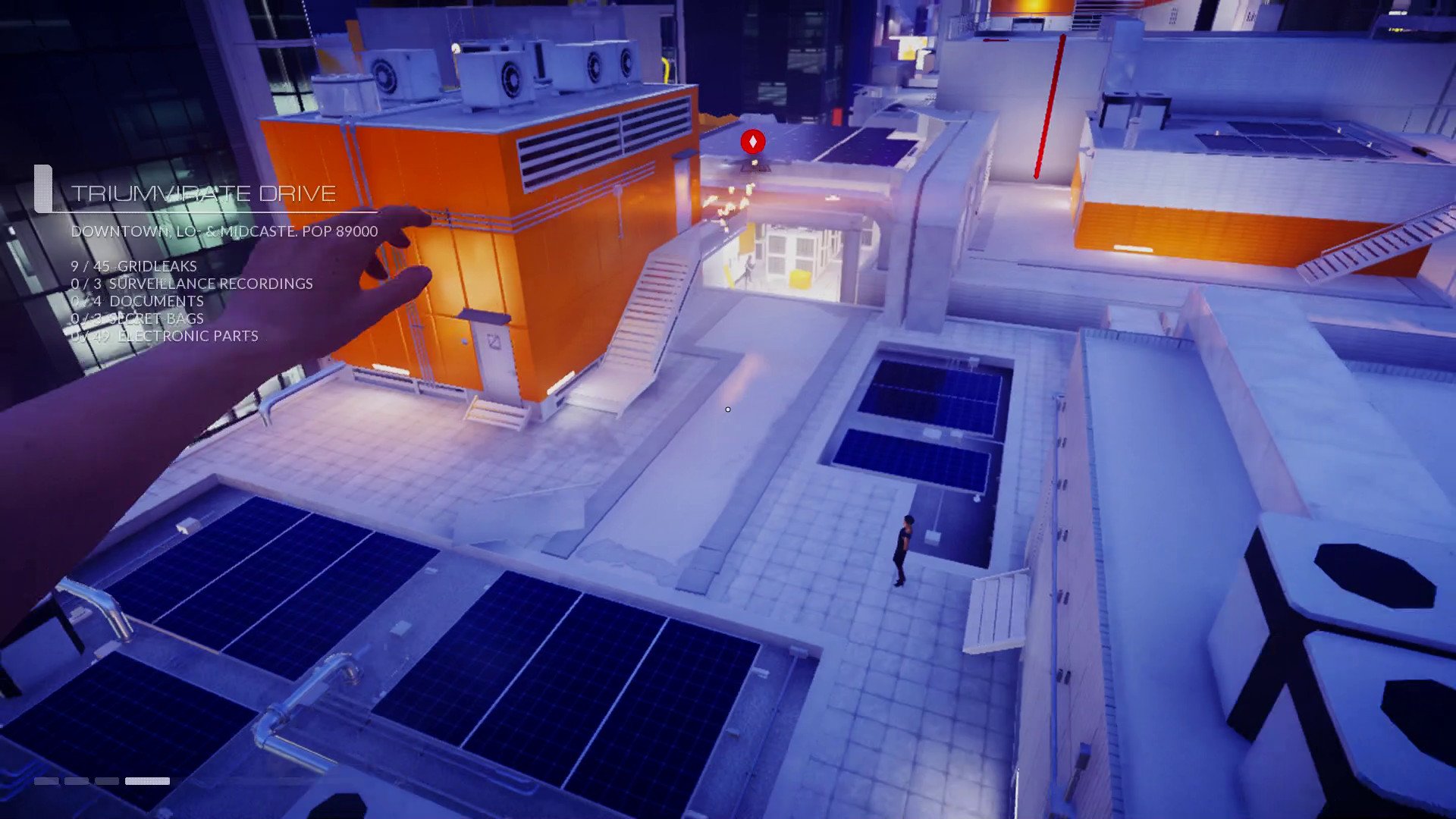
Improve your runs
Progression
A problem which quickly prevailed in the first Mirror's Edge was a lack of replayability and variety surrounding the game's main story mode. Attempting to improve the game's longevity, Faith's abilities are now attached to a tree-based progressions system, which can be explored through the use of in-game checkpoints.
Progression is divided up into three distinct subcategories, with individual upgrade paths for Faith's movement, combat skills, and gear. These points are earned by collecting in-game experience points, collected for completing missions and accumulating collectibles. This style of progression has become commonplace in triple-A titles, as a simple way to drip feed the player's abilities over the course of the game.
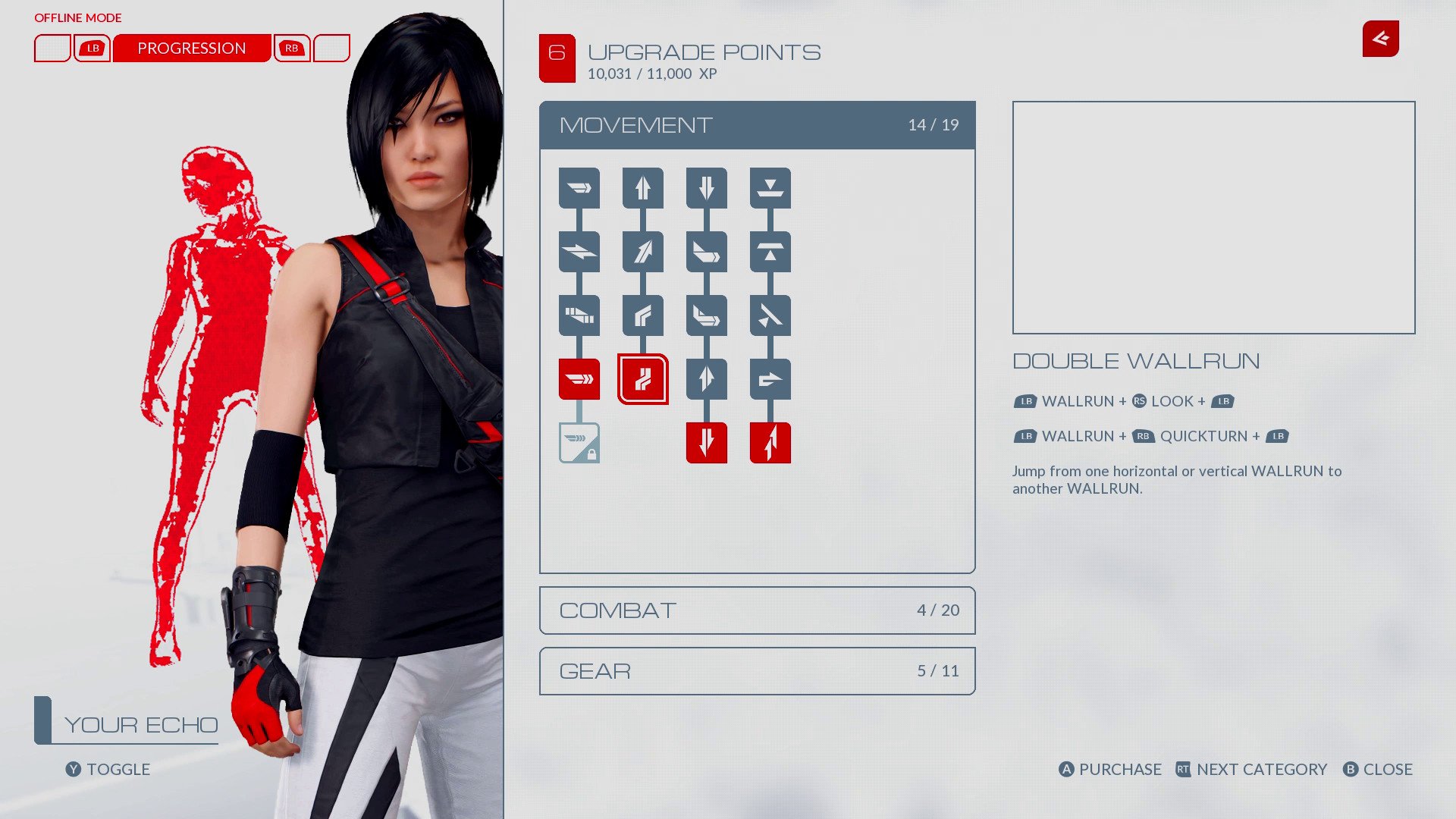
The progression tree takes away one of the best aspects of Mirror's Edge and its obsession with simplicity. The first game provided an environment for players to learn their own personal skill set, rather than the passive abilities Faith gains of the course of the game. This is a less satisfying approach to player development and feels like an uninspired implementation on DICE's behalf.
The progression system also limits the amount of content given to the player at the single time, creating invisible barriers between areas of the world. The newly-debuted MAG Rope is an example of this, restricting access to certain sections of the maps until upgrades have been obtained.
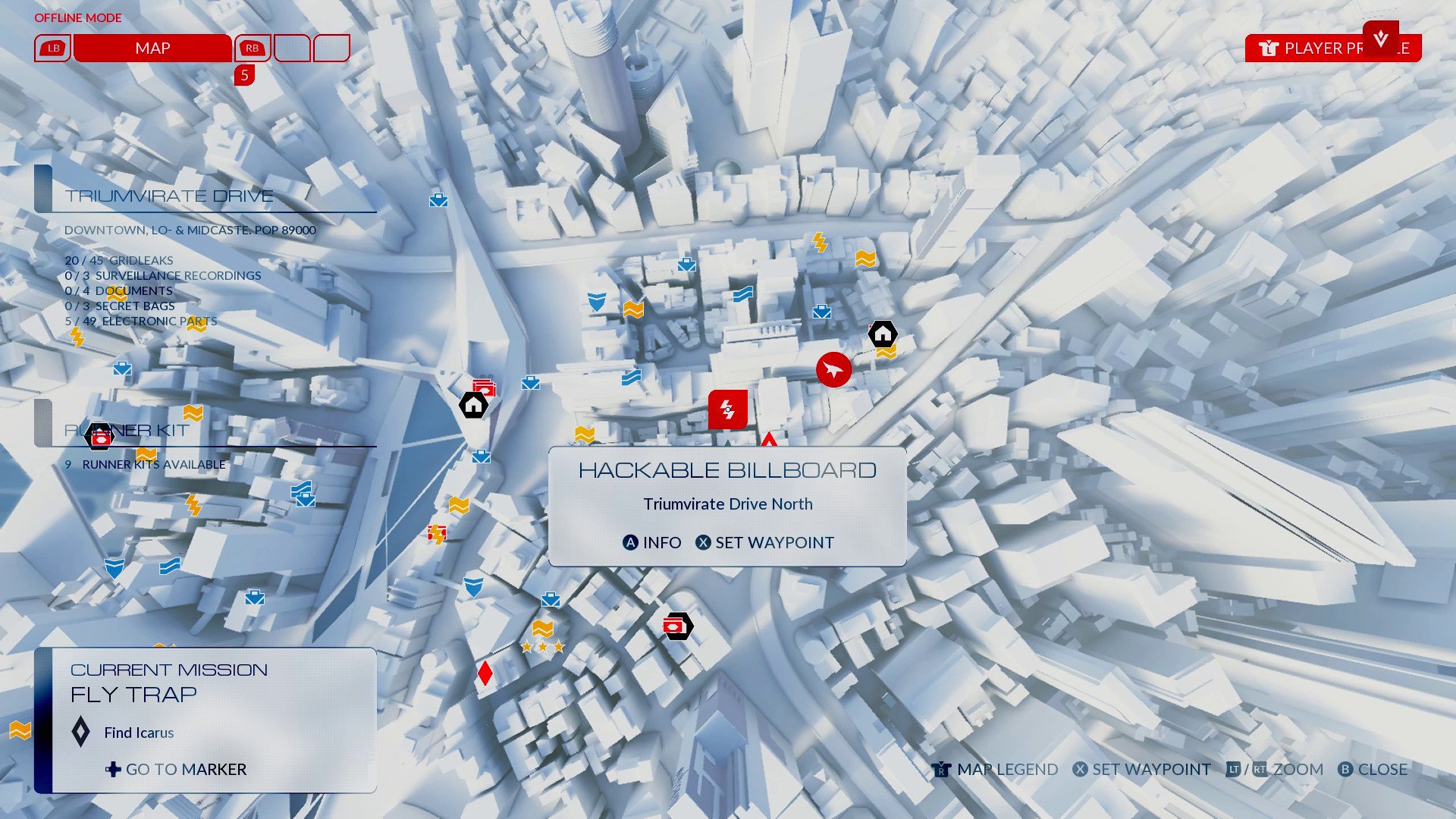
Missions for everyone
Content
Similar to many modern open world games, Mirror's Edge Catalyst's world is littered in quests to which add upon the main storyline. These all loosely fit into the game's narrative and reward the player with XP and other bonuses.
These side missions cater for all play styles, offering challenges in the speed, combat or puzzle aspects of gameplay. Deliveries and dashes are speed-based missions, requiring the player to quickly run between checkpoints before the clock runs out. These take advantage of the open world's handmade routes with a number of ways to reach the destination. For players who prefer the game's puzzles, hackable billboards are suspended above the city, accessible by climbing the surrounding environments. Some of these puzzles are genuinely challenging and require a certain mindset to be completed.
"Side missions cater for all play styles, offering challenges in the speed, combat or puzzle aspects of gameplay"
Gridnodes are a similar alternative to billboard hacks, featuring an access point suspended at the top of a server room. Hooking up to the Gridnode provides access to new fast travel locations, which help massively when traveling across a fully-unlocked open world. These access points are hidden behind a labyrinth of lasers, avoided by climbing between server racks and maintenance tunnels. These puzzle-based missions take advantage of the best traits of the game in a shorter, condensed mission structure.
Mirror's Edge Catalyst also introduces a brand new social element to the franchise, ranging from in-depth leaderboards, user-created challenges and other ways to interact with other runners. While the game is still a story-driven single player experience, a minimal effort to build on the community may prove useful in upholding an active player base. Sadly, a number of online features are tied to the Mirror's Edge website, which is more of an inconvenience than an enhanced social experience.
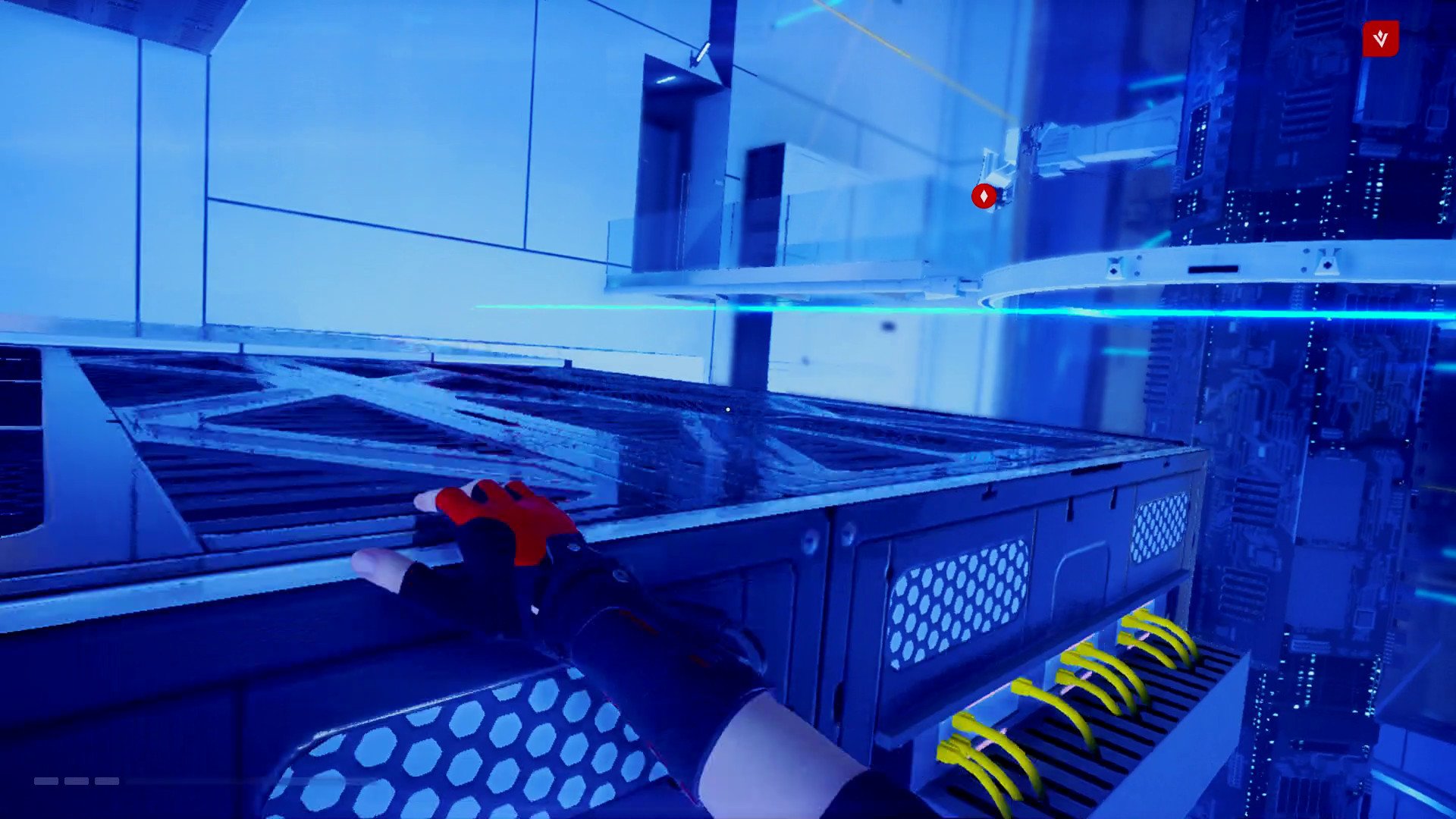
Like the majority of Xbox One games that run on the Frostbite 3 engine, Mirror's Edge Catalyst's Xbox One version has seen some major cutbacks to get it running on the console. With an expansive, living world, Electronic Arts has pushed the hardware to the limits, but unfortunately, the Xbox One is unable to deliver the world Mirror's Edge Catalyst promises.
With a spotlight on the game's responsive and sleek movement, the game has been designed to run at 60 FPS, in sacrifice of a higher resolution. Like previous Frostbite 3 titles like Battlefield Hardline, the game runs a rather disappointing 720p resolution. When paired with the game's toned-down color scheme and muddy textures, the Xbox One version of the game isn't the visual marvel it's made out to be. That said, in comparison to the game's closed beta I played back in May, the game has seen huge leaps in performance.
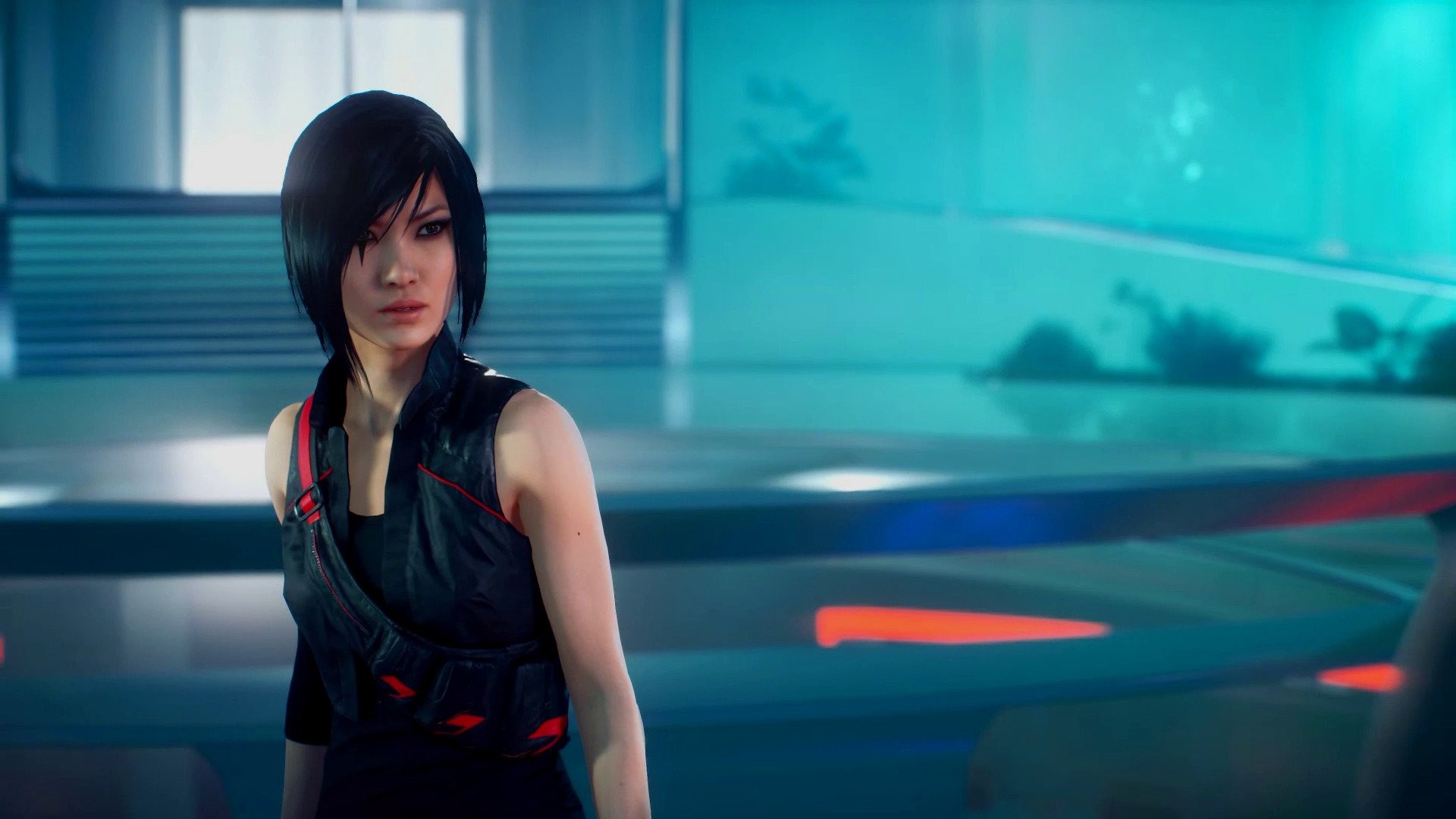
Conclusion
For fans of the original, Mirrors Edge Catalyst offers a nostalgic return to a modern dystopian world, with massive improvements in gameplay mechanics. The franchise's fast-paced, fluid movement returns, combined with an immersive and engaging narrative. For gamers who aren't familiar with the first game, Mirror's Edge Catalyst's flaws are many, failing to obscure its biggest missteps. Despite these issues, Mirror's Edge Catalyst is an enjoyable experience with a truly unique approach to gameplay and storytelling.
Pros:
- Flowing, natural movement
- Flawless portrayal of a futuristic monitored society
- Memorable cast
Cons:
- Slow, clunky combat
- Map design doesn't support some of the game's mechanics
- Unsatisfactory performance on Xbox One
This review was conducted on Xbox One using a copy purchased by the reviewer.

Matt Brown was formerly a Windows Central's Senior Editor, Xbox & PC, at Future. Following over seven years of professional consumer technology and gaming coverage, he’s focused on the world of Microsoft's gaming efforts. You can follow him on Twitter @mattjbrown.
